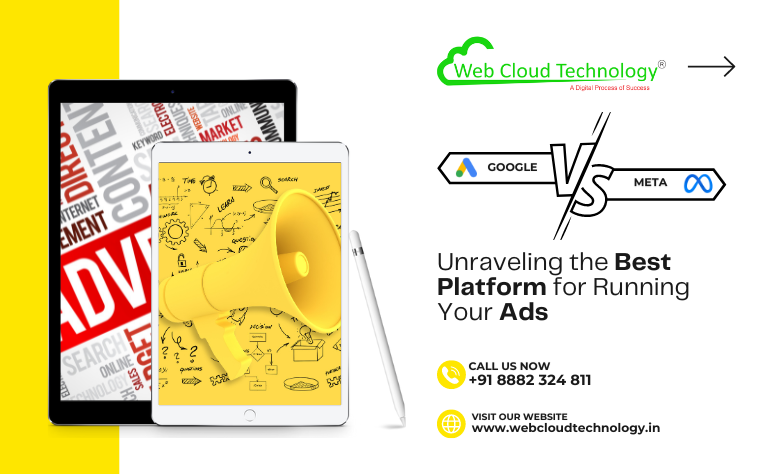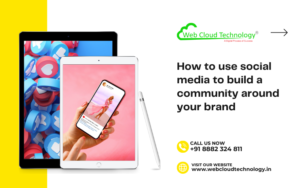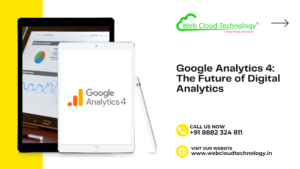Post Categories
Google vs. Meta: Unraveling the Best Platform for Running Your Ads

In the vast realm of digital advertising, two giants stand tall: Google and Meta (formerly known as Facebook). Both platforms offer unparalleled opportunities to reach your target audience, boost brand visibility, and drive conversions. However, choosing between them can be a daunting task. In this article, we’ll explore the merits of each platform to help you make an informed decision for running your ads.
1. The Power of Google Ads:
Google Ads is the undisputed king of search engine advertising. It allows businesses to display their ads on Google’s search results pages, partner websites, and YouTube. Here’s why Google Ads could be the right choice for your marketing endeavors:
a) Intent-based targeting: With Google Ads, you can target users based on their search queries, ensuring that your ads are displayed to potential customers actively seeking products or services similar to what you offer.
b) High-intent audience: Google users typically have high intent as they are actively searching for solutions, making them more likely to convert into customers.
c) Extensive reach: Google processes billions of searches every day, offering a vast audience pool to tap into.
d) Diverse ad formats: Google Ads provides various ad formats, including text ads, display ads, shopping ads, and video ads, catering to different marketing objectives.
2. The Allure of Meta Ads:
Formerly known as Facebook, Meta is the world’s largest social media platform, boasting over 2.8 billion monthly active users. Here’s why Meta Ads could be your ticket to success:
a) Highly targeted demographics: Meta excels in providing advanced targeting options based on user demographics, interests, behaviors, and connections, allowing you to reach your ideal audience precisely.
b) Visually engaging content: Meta ads thrive on visually appealing content, including images and videos, allowing brands to craft captivating and shareable ads.
c) Social proof and engagement: Meta allows users to interact with ads through likes, comments, and shares, helping to build social proof and amplify brand reach.
d) Retargeting capabilities: Meta’s pixel and tracking features enable you to retarget users who have already engaged with your brand, fostering stronger connections and encouraging conversions.
3. Consider Your Objectives:
The decision of whether to choose Google Ads or Meta should largely depend on your advertising goals and target audience.
a) Consider Google Ads If:
- Your primary focus is on capturing high-intent users actively searching for your products or services.
- You want to leverage Google’s vast search network and display ads to showcase your offerings.
- You aim to drive immediate conversions and ROI through search engine marketing.
b) Consider Meta Ads If:
- You want to build brand awareness and engage with a vast user base.
- Your products or services cater to a younger, social media-savvy audience.
- You have visually appealing content that can captivate users and generate shares.
4. Combining Both Platforms:
For some businesses, utilizing both Google Ads and Meta Ads in a harmonious advertising strategy can yield impressive results. By doing so, you can cover a broader spectrum of the digital landscape and cater to users at different stages of their customer journey.
Conclusion:
Choosing Best Platform for Running Your Ads is a crucial decision that requires a deep understanding of your target audience, marketing objectives, and available resources. While Google Ads excels in capturing high-intent users, Meta offers exceptional demographic targeting and visual engagement. Ultimately, a well-rounded approach that leverages the strengths of both platforms might be the key to unlocking your advertising success. To make the most of your investment, consider seeking assistance from a reliable and experienced Facebook ads management agency in Delhi, specializing in digital marketing services, and let the experts guide your brand to new heights of advertising excellence.
INTERFACE WITH US
Does your responsive website need usability testing done? Is your cloud product not mobile-friendly yet? Are you not entirely happy with your user acquisition flow on that mobile app? Or perhaps that dashboard screen confuses your CIO and CMO? We are among the leading UX design firms in India, but you don’t have to be based in India to work with us.
info@webcloudtechnology.in | +918882324811
Note: We'll only use these information for contact purpose only.




